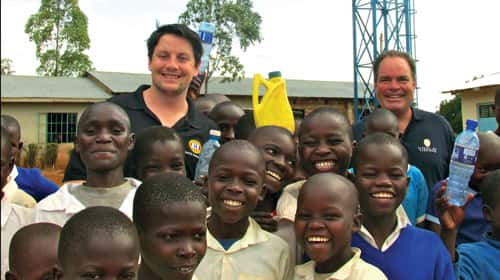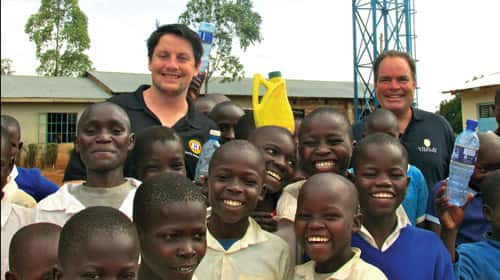
In today’s team oriented culture, the classic idiom of two heads being better than one applies to everything from schools incorporating group assignments to workplace teams collaborating on projects. As businesses, organizations and government agencies have seen the benefits of blending complementary strengths—some have attempted to take the team approach a step further in partnering with other agencies and groups for mutual benefit. This can apply to the nonprofit sector as well. When charitable organizations partner with government leaders and the private sectors, their goals and objectives are more successfully met.
Global Partners for Development (GPFD), a 501(c)(3) nonprofit based in Rohnert Park, fundraises for and manages education and public health development projects in various countries in East Africa. The organization was founded in 1978 as a membership organization called World Runners International Foundation, whose primary objective was to help end hunger and starvation throughout the world, focusing on those areas that needed the most aid. In 1989, the organization changed to Global Partners for Development and began working directly with community leaders in Tanzania, Kenya, and Uganda to identify and implement projects in the areas of health, water and education.
The Power of Partnership
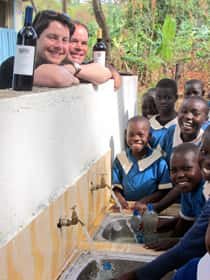 Today, GPFD’s mission entails not only managing development projects in the most impoverished areas of East Africa, but doing so in a sustainable way that is driven by, and ultimately managed by, the local communities which they serve.
Today, GPFD’s mission entails not only managing development projects in the most impoverished areas of East Africa, but doing so in a sustainable way that is driven by, and ultimately managed by, the local communities which they serve.
“By the mid-’80s they [GPFD] didn’t just want to grant money to top down solutions, they wanted to actually partner with local people on the ground,” says Daniel Casanova, executive director of Global Partners for Development. “We began working on the ground in Tanzania and Kenya with women’s groups and local schools and children and doing small grant making. In international development it’s really easy to say ‘we’re grassroots—we partner with people’ and a lot of times that’s true on the surface but to actually do it looks a lot different. You need to let people be the drivers of their own development as well as give them funds. Global Partners has been doing that authentically for a long time.”
The partnerships with local community leaders are fundamental to Global Partners’ mission, vision, approach and success. They help the organization identify where to place their efforts, give the local population a vested interest and ownership over the project, and empower people to break the vicious cycle of poverty.
For example, if you walk into a community and offer to build a soccer field, says Casanova, but water is the community’s greater need, then the support is contrived. “In international development, that’s a lot of what happens when people say they’re partnering with local people or they have local partners,” he adds. “Our partners dig a little deeper in finding out what communities need.”
In every project Global Partners gets involved in, the community in one of the regions in East Africa has explicitly stated their need, and has joined global Partners in the effort to raise funds, labor and materials.
“Every community contributes between 20 to 60 percent of the funds for the project,” says Casanova, guaranteeing that the money is well spent. “They have to buy into the project in that way. It helps to guarantee that it’s something people need because if the local people are contributing labor and funds into the project they’re not going to do that for something they don’t want or something they like but don’t need.”
Communities can make their contributions in a number of ways. One tactic is to partner with their local government to identify any available funds for these kinds of projects. Often members of parliament have access to Community Development Funds, specifically to improve infrastructure. Communities will also fundraise by going family to family and to local businesses, and/or by contributing materials and labor. Some regions may have access to livestock that they can sell for a project. In addition to having a vested interest in the project, by contributing labor the local community is trained to operate and manage the projects, ensuring long-term sustainability.
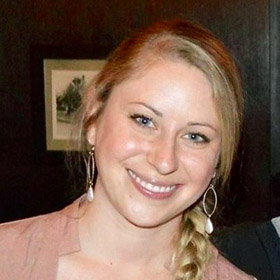 “One of the biggest problems with water infrastructure in Africa is that after it’s installed and it lasts a couple years, some small issue arises and the community doesn’t have the funds to fix it,” explains Amy Holter, director of programs and evaluation of Global Partners for Development. “Suddenly there’s all this water infrastructure everywhere that’s not working. For sustainability, we put in a community kiosk. The students at the school don’t pay for the water but the surrounding community (because usually the community around the school doesn’t have access to clean water either) pays for water—a very small amount—from the school. Then the school has an account set aside for maintenance of the water system. They basically have to treat the water like a business to ensure they can maintain it over time.”
“One of the biggest problems with water infrastructure in Africa is that after it’s installed and it lasts a couple years, some small issue arises and the community doesn’t have the funds to fix it,” explains Amy Holter, director of programs and evaluation of Global Partners for Development. “Suddenly there’s all this water infrastructure everywhere that’s not working. For sustainability, we put in a community kiosk. The students at the school don’t pay for the water but the surrounding community (because usually the community around the school doesn’t have access to clean water either) pays for water—a very small amount—from the school. Then the school has an account set aside for maintenance of the water system. They basically have to treat the water like a business to ensure they can maintain it over time.”
Partnering with wineries
Facilitated by Global Partners for Development is the Vineyards to Villages (V2V) program—a partnership with members of the Sonoma County wine industry to bring clean water infrastructure to schools in East Africa. The program addresses the reality that access to potable water remains a key public health issue in many areas of the world. Through funding by the wine industry, clean water infrastructure, sanitation facilities, hygiene education, and community water kiosks are available at primary and secondary schools in western Kenya. These areas previously had no clean water source and waterborne disease is rampant.  The program was the brainchild of David Stare, owner of Dry Creek Vineyard and president of the board of directors for GPFD.
The program was the brainchild of David Stare, owner of Dry Creek Vineyard and president of the board of directors for GPFD.
“One of the common similarities between the wine industry and East Africa is adequate water,” says Stare. “In order to make good wine and grow good grapes you have to have an adequate supply of water. To grow as people in East Africa you have to have an adequate supply of water. Vineyards and wineries that don’t have a good water source have difficulties, and people who don’t have a quality water source obviously have difficulties too. About three years ago I said ‘we have to somehow enlist the wine industry to help raise funds for water projects in Africa because of the similar needs for water’. That’s how Vineyards to Villages was born.”
Initially wineries involved in the program would donate a percentage of revenue from a certain vintage of wine, and some still do that. However, after some time GPFD also implemented an annual wine and food safari event that acts as the key fundraiser for the program.
“[The V2V program] has evolved,” says Holter. “We wanted a way to get small wineries involved. Stare was reaching out to folks who were donating large amounts directly, and we wanted a way to also engage smaller wineries. For a few years wineries would identify one of their wines in their tasting room and they would give a third of the sales price of that wine to us, for years. We have some great partners that are small family owned wineries. But we felt we couldn’t keep asking wineries to continue giving a third of their sales price to us forever, so we thought it would be great to have an event that we could market and get the word out to people.”
Held every November over a three-day weekend, the 2017 wine safari event had more than 20 boutique wineries participating along with local restaurants and hotels. For their $50 ticket, participants of the safari received complimentary tastings at the participating wineries across Sonoma County as well as discounts for local restaurants, hotels and tour companies, a keepsake wine glass, and an entry into the V2V raffle. 100 percent of the proceeds from ticket sales and a portion of all wine bottle sales went directly to the V2V program.
V2V also added additional events at the 2017 weekend, including a winemaker dinner at Christopher Creek Winery, a winemaker lunch at Fritz Underground Winery, and chocolate pairings at Pedroncelli Winery. Many of the participating wineries also participated in a “Harambee” (Swahili word for fundraiser) at Dry Creek Vineyards that featured African themed food and music, and of course wine. A presentation reminded everyone of the importance of the work, and how bringing water to the schools in East Africa has far-reaching impacts beyond basic needs of drinking and hygiene—including schools growing vegetable gardens to better their students’ nutrition and having the ability to make cement to add buildings to their schools.
In its third year, V2V has already raised more than $150,000—bringing clean water to eight schools and more than 25,000 children and their families in the Kasipul Constituency in Kenya. The program hopes to fund clean water infrastructure in at least 30 schools by 2020.
“There are 21 primary and secondary schools in this district without a source of water,” says Stare. “The way these schools receive water now is the schoolchildren will bring a bottle of water from their home. It’s all dumped in together and that becomes a source of drinking water at school for the day. Needless to say it’s not very much and often the water is polluted, and of course when you drink bad water you get dysentery and you can’t go to school. Providing these schools and these villages with clean water has a remarkable affect on the overall health of the village and enables kids to stay and succeed in school. It has a remarkable effect on the ability of a child to learn and grow and prosper.”
Seeing results in action
Stare has visited Africa twice and hopes to return this year, not only for this program but also because he and his wife personally sponsor three teenagers in Uganda and finance their secondary school costs. Other winery owners involved in the V2V program have visited the school sites as well, which has been a life changing experience for them.
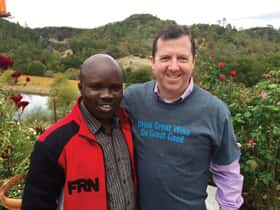 John Viszlay, owner of Viszlay Vineyards, a family owned, boutique winery located on 10 acres in the Russian River Valley, spent three weeks in western Kenya to see the construction of the first well financed by V2V, as well as participate in scouting missions to determine other villages that could be served by the program. Seeing the program in action first hand confirmed his resolve to continue giving to such a worthwhile cause.
John Viszlay, owner of Viszlay Vineyards, a family owned, boutique winery located on 10 acres in the Russian River Valley, spent three weeks in western Kenya to see the construction of the first well financed by V2V, as well as participate in scouting missions to determine other villages that could be served by the program. Seeing the program in action first hand confirmed his resolve to continue giving to such a worthwhile cause.
“It was a real eye-opener—a great experience,” says Viszlay. “We saw the first well after completion. Everyone was so grateful. It’s really a third world country. You see these places in movies and that’s about as exposed as we get to it. But to actually be there and realize these folks don’t have clean drinking water—something we take so for granted. It was an amazing experience.”
Despite being a small lot winery, Viszlay Vineyards has made various contributions over the years to V2V and other charitable organizations. Besides doing so for altruistic reasons, it’s a win-win, gaining exposure of their winery and ultimately increases sales.
“Whenever we have events like that [the V2V wine safari] it definitely helps to attract new customers—folks that haven’t been to our winery,” says Viszlay. “It certainly does pay off in that sense that you get exposed to new people and new customers.”
Viszlay has even seen customers buy multiple bottles of their signature V2V wine after learning about the program.
Local needs, global partnerships
Due to the destructive October firestorms that swept through the North Bay, V2V changed their fundraising scope this past year to give half of the wine safari event funds raised to local fire disaster relief.
“Since we’ve been serving communities globally for so long we’ve been set up to be responsive to community needs and right now our community needs us,” says Holter.
Half of the proceeds from ticket sales from V2V will be going to water projects at schools, and half of it will be going to the Active 20-30 club, Healdsburg, which will be working with Global Partners to identify long term fire relief efforts for children in Sonoma County and surrounding areas that were affected.
“One of my favorite phrases is ‘local is as far as the heart can travel’,” says Holter. “There is all this emphasis on local eating and local drinking and local giving and Sonoma County has always been generous enough to take care of their own and also to extend that generosity to others. I don’t think that these fires are going to break that spirit.”
Active 20-30 club
In light of the recent devastation in the North Bay from the October, 2017 firestorm, half of all proceeds from the Vineyards to Villages event will go to local disaster relief. The funds will be administered by the Active 20-30 Club of Healdsburg, and, staying true to GPFD’s mission of helping youth who need it most, will go to long-term disaster relief efforts for children in Sonoma County that have been most devastated by the fires.
“Similar to how we do the work in East Africa, we want to try to take that same sentiment to how we do that here,” says Daniel Casanova, executive director of Global Partners for Development. “Instead of just granting the money out to some fire relief fund we’d like to figure out, in partnership with the 20-30 Club, who are the most disenfranchised populations effected by the fire and how that would relate to children and families, and then grant the money out to those populations through a partner we’ve identified together.”
The Active 20-30 Club is an international service, founded in 1922, and is made up of men and women in their 20’s and 30’s who are focused on helping children in their communities. Building on leadership skills, these young adults serve local youth through hands-on work and fundraising. While each chapter is locally run by a volunteer board of directors and club members, each with its own particular style, they all have a common goal of improving the quality of life of the youth in their communities.
The club puts on a number of fundraisers each year, including the Windsor Kaboom! fireworks show, the Endless Summer Golf Tournament, and the Small Town Comedy Festival with Sonoma Cider. They also engage in several hands-on events with children including a kids’ shopping spree, Christmas carnival, and science challenge.
The organization often partners with local businesses to act as sponsors for events through monetary or in-kind donations, or to recruit volunteers. Some of their major sponsors have included Redwood Moving and Storage, Trione Vineyards and Winery, Westcoast Solar Energy, Ridge Cementing, Santa Rosa Stainless Steel, Umpqua Bank, and Paul Graham Drilling, among others.
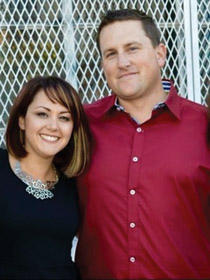 “For future fundraising we’re looking at partnering with a company for a shared cause and philanthropic goal,” says Mathew Carfi, president of the Active 20-30 Club in Healdsburg. “Currently [how local businesses are involved in Active 20-30] is mostly through sponsorship. It’s a way for businesses to get their name out there and help in a way that they know will go to at-risk youth in the community.”
“For future fundraising we’re looking at partnering with a company for a shared cause and philanthropic goal,” says Mathew Carfi, president of the Active 20-30 Club in Healdsburg. “Currently [how local businesses are involved in Active 20-30] is mostly through sponsorship. It’s a way for businesses to get their name out there and help in a way that they know will go to at-risk youth in the community.”
For the Vineyards to Villages event, the Active 20-30 Club of Healdsburg will also be partially matching the funds raised, up to $5,000. At the time of this writing, they had not yet decided specifically how the money would be distributed or used, but they know that they want it used for long-term relief that is not covered in the initial push for disaster relief funding.
“We want to be part of the process, and part of the solution in helping the community rebuild and get back on its feet,” says Carfi. “I know that their (GPFD) goals are essentially helping in the long term—having a sustained effort as opposed to just helping in the immediate, short term, having a long term, long lasting support. That is really what our club is looking to do. We’re trying to think out in the future—the next six months, or even a year—on how we’re going to be able to continue to help the people in need because as we all know this is going to be a long process.”
Vineyards to Villages Participants
The participating wineries involved in the 2017 Vineyards to Villages program include:
Geyserville-Cloverdale:
Sbragia Family Vineyards
Fritz Underground Winery
Pedroncelli Winery
Healdsburg:
Papapietro Perry Winery
Kokomo Winery
Dry Creek Vineyard
Mauritson Wines
Portalupi Wine
Beneficiis Wines
Kobler Estate Winery
DaVero Farms & Winery
Viszlay Vineyards
Christopher Creek Winery
ACORN Winery
Merriam Vineyards
Rodney Strong Vineyards
Davis Bynum Winery
Windsor-Santa Rosa:
Windsor Tasting Lounge
Tonti Family Wines
Paradise Ridge Winery
Petaluma:
Sonoma Portworks
Barber Cellars
Sonoma-Glen Ellen-Kenwood:
Valley of the Moon Winery
Spann Vineyards


